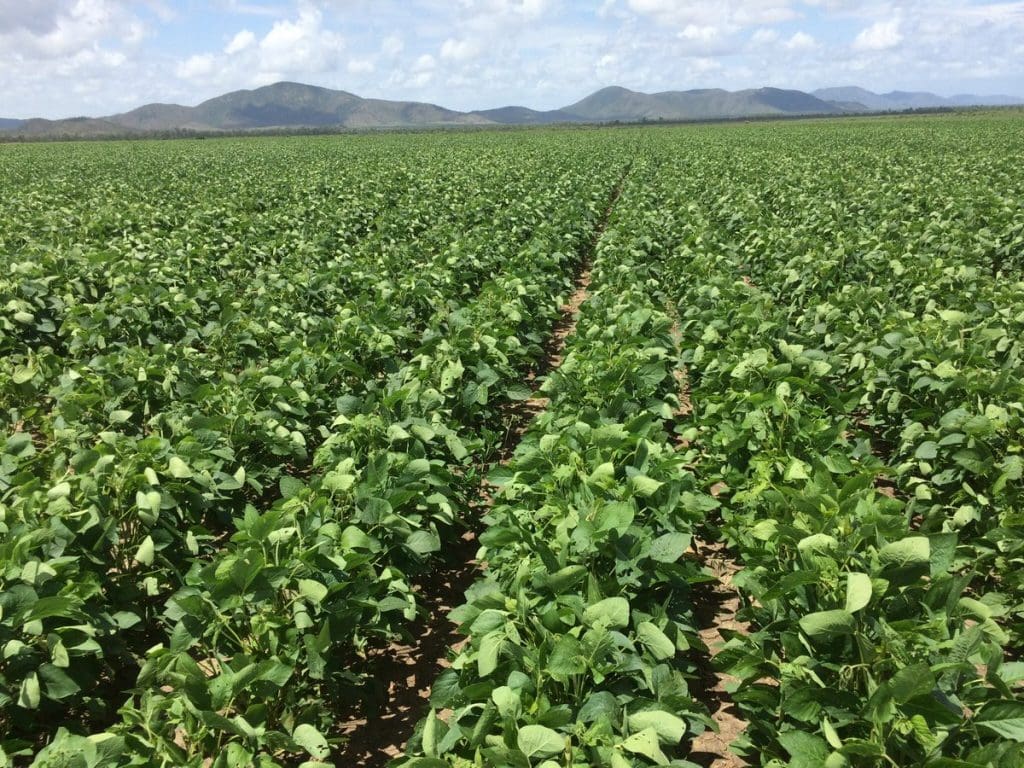SOYBEANS could be in for a growth period in coming years as high prices based on strong and consistent domestic demand, and its agronomic benefits in sugarcane rotations, help the crop crib back area lost to cotton.
Pulse Australia chief executive officer, Nick Goddard, said the soybean crop grown over the 2017-18 summer sold for prices of around $700 per tonne, around $200/t above the long-term average.
“Whether prices were being bolstered by a shortage of supply from southern NSW, where they’ve been squeezed out by cotton, or added stockfeed as well as human-consumption demand, prices for soybeans this year have been very high,” Mr Goddard said.
Australia has produced crops of around 100,000t in years past, but the crop has more recently come in at around 40,000t, with sugarcane areas in Queensland and northern New South Wales accounting for the vast majority of production.
Mr Goddard said price signals for soybeans going forward looked positive, and any exportable surplus of Australian soybeans generated in years to come was likely to have no trouble finding a home.
“As a guaranteed non-GM supplier into the world market, we would have good opportunities in Japan, Korea and even China, but we’re flat out getting the production to even cover domestic requirements at the moment.”
PB Agrifood trader, Andrew McDonald, said Australian soybean had recently been trading at close to $150/t above the world price for non-GM soybeans, assisted by the requirement from the stockfeed sector for full-fat soymeal.
“Australia needs a certain amount of full-fat meal to supply piggeries, poultry and other intensive animal industries, and the meal we import from the United States and South America is solvent extracted,” Mr McDonald said.
Most soybeans are processed whole and go into human markets like bread mixes, tofu and soy milk.
“Our assumption is that Australian production struggled to supply the domestic market for soybeans last year.”
Northern opportunity
Mr McDonald said soybeans’ biggest potential area for expansion was in sugarcane areas, where low sugar prices had growers looking for lucrative alternative crops.
“Cotton and tree crops have encroached in areas where soybeans were once grown, and now soybeans are a minority in some farming systems.”
Mr McDonald said returns per megalitre made soybeans uncompetitive for irrigators.
“The growth area going forward is in the cane rotation from the Burdekin down to Grafton.”
He said strong cattle prices, and even tree crops, had encouraged a swing out of soybean areas in North Coast NSW, but some increase in area had come with crops grown on the northwest slopes of NSW around Inverell.
New variety
Mr McDonald said the success of replacement mungbean varieties, Crystal and Jade, had renewed grower confidence in mungbeans in traditional dryland systems, and the performance of the new soybean variety, Mossman, might bolster area in a similar way.
“Sugar prices are not as strong, so we’re having increased interest from cane growers. The Mossman variety, bred by Dr Andrew James at the CSIRO, will eventually replace Leichhardt, and should improve interest in the crop.”
Agronomically, Mr McDonald said soybeans continued to be the best break-crop legume to grow in rotation with sugarcane.
Soybeans are typically planted in November through to late January and harvested in April-May, but Mossman is expected to allow the crop to be grown over winter in the tropics.
Grain Central: Get our free daily cropping news straight to your inbox – Click here



HAVE YOUR SAY